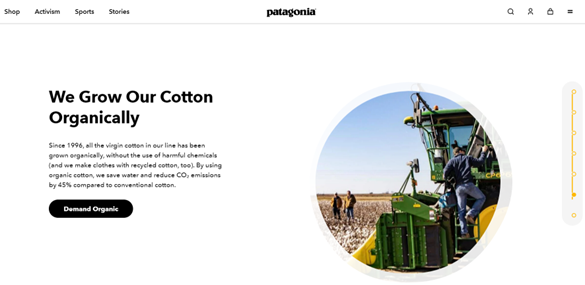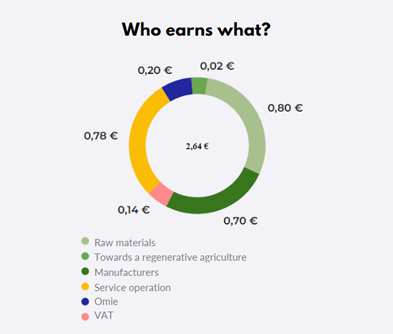
Article
Creativity in pricing: 3 ways to stand out with your pricing strategy
Prices are just numbers, until you get creative with it. In today’s highly competitive market, companies are always looking for new ways to stand out. Whether it’s on their packaging, on their website, or on their social platforms, they constantly make use of their creativity to catch the eye of potential customers. However, one aspect that is often overlooked is the way prices are communicated. While pricing communication might seem like an area where we don’t have many things to play with, there is actually a lot of room for creativity and innovative thinking. From eye-catching displays to humoristic communications, companies can use pricing as a tool to create a memorable brand experience and differentiate themselves, while still sticking to their brand strategy and positioning. In this article, we will explore different ways to get creative when communicating prices.
Be transparent
Nowadays, transparency has become critical in the eyes of customers. More and more, they are looking for businesses that have values and morals that align with theirs. That is why companies need to put effort into meeting the expectations of their customers and showing the human side of their brand. By doing so, companies will look more approachable and reliable.
For example, Patagonia, which is known to be a committed brand, uses transparency on its website to justify their relatively high prices. They developed a page called “The hidden cost of the clothes we’re buying.” to explain what lies behind their high prices; recycled materials, organic cotton, improved conditions for workers, etc.

By being transparent, Patagonia is not only justifying their high prices, but they are also showing how trustworthy and ethical they are which is totally in line with their brand positioning. Patagonia used their pricing strategy in a clever way by linking and aligning it to their core values.
There are other brands that go even further in that idea of price transparency and justify their prices by showing exactly where the money goes. Take the example of Omie & Cie, an online grocery store actively militating to protect the climate and biodiversity. For every single product sold on their website, they show the cost breakdown of that product. In the picture, we see the cost breakdown of one bag of whole-grain pasta costing €2.64. While most online grocery stores simply put the price of
a product next to it, Omie & Cie goes the extra mile by being fully transparent regarding where the customers’ money goes. It can be a very efficient way to show how reliable your brand can be and highlight your brand values.

Transparency can be a powerful tool, especially when dealing with touchy subjects like a price increase, for example. When addressing price increases, try to be transparent with your customers, your message will feel more genuine, and people will better understand why what you sell suddenly costs more. Whenever Netflix increases its prices, the company sends an email reminding its users that the reason for it is that they keep adding more and more qualitative content, which means they have to charge more to pay for it. It does not make their user forget about that bad news for sure, but at least it helps people accept the information a bit better.
Interact with your customers
Every day of our life, we interact with people. Whether it’s for work or for pleasure, interacting with each other is part of our day-to-day. Why wouldn’t it apply to pricing? Communication around pricing is often straightforward. A company chooses a price, it shows it to the customer who chooses if they buy the product or not. But when a brand adds a layer of intercommunication between them and their customers, the impact of it can be strong.
A great example of how interacting with customers about pricing can have a significant impact is coming from Uniqlo and their “lucky counter” campaign. To promote their online store in Korea, Uniqlo launched a sales campaign using Twitter in order to interact with their customers. The principle was simple: the customers could go on Uniqlo’s website, where few items were promoted, but the promotional price depended on them. They could tweet about any items they wanted to save money on. And the higher the number of tweets, the higher the discount. As a result, by the time all the products reached the lowest price possible set up by Uniqlo, the brand was already the talk of the town. And the best part of this story is that the clothes were planned to be sold at the lowest price
possible anyway. But at least this time, Uniqlo had built a link with their customers, allowing them to enjoy a great brand experience.
So don’t hesitate to get creative with the interactions you have with your customers about your prices. Technology allows us to stay connected and to feel close to each other, so use that to your advantage to make your customer part of your communication.
Use psychology
Humans don’t think rationally. If we did, we wouldn’t procrastinate, play the lottery, or skip sport day. It is because we are irrational that psychological mechanisms can have such an impact on us. And most of the time, we don’t even notice it.
The great advantage of psychology in marketing is that you can play with so many aspects of your pricing strategy. Whether it is on the actual price of your product, on the display you use to show your price, or on how you communicate a promotion, your creativity can have no limits when it comes to this.
There are many examples of how to use psychology in your pricing strategy. For example, you can add “popular” or “top pick” next to the option you want your customers to pick. You can play with how your customers perceive your prices by removing the currency sign or the thousands separator to make your offer look cheaper1. But you can also set a high price for one of your products to make your other products look more accessible. There are so many options you can play with that it will be difficult to go through all of them. So check this article if you want to discover how to use psychological mechanisms to have a more effective pricing strategy.
Don’t be scared, get creative!
We could show you many examples of brands that got creative in their pricing communication, but in the end, there is no one-size-fits-all approach or guideline to follow when it comes to creativity. What matters the most, is that you get creative while sticking to your brand image and to what your customers expect from you in order to remain relevant and consistent. Don’t hesitate to challenge the idea that price communication is straightforward and that we can’t do much about it. Think outside the box and try new things.
Get in touch with us if you want to know more about how The House of Marketing can help you with your idea.